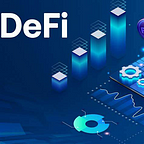All You Need To Know About Tokenomics And It’s Components
Tokenomics involves designing an ecosystem that incentivizes desired behaviors, fosters network participation, and ensures the efficient functioning of the token economy. Key components include determining how tokens are created, whether through ICOs, TGEs, mining, or other methods. It also involves deciding how tokens are distributed among participants, such as through private sales, public sales, airdrops, or bounty programs.
What Is Tokenomics?
Tokenomics refers to the economic principles and mechanisms that govern the behavior and distribution of tokens within a blockchain or cryptocurrency ecosystem. It combines the terms “token” and “economics” to describe the structure and functioning of a token-based system.
Tokenomics encompasses various aspects related to tokens, including their creation, distribution, supply, utility, and value. It aims to design an ecosystem that incentivizes desired behaviors, fosters network participation, and ensures the efficient functioning of the token economy.
Components Of Tokenomics
Some key components of tokenomics include:
1. Token Creation
Token creation refers to the process of generating new tokens within a blockchain or cryptocurrency ecosystem. There are several methods through which tokens can be created, depending on the underlying technology and specific requirements of the project. Here are some comprehensive examples of token creation methods:
◾️Initial Coin Offering (ICO): An ICO is a fundraising method used by blockchain projects to generate capital by issuing and selling tokens to investors. The tokens are typically created on an existing blockchain platform (e.g., Ethereum) and represent a specific utility or investment opportunity within the project. The tokens are usually distributed to investors in exchange for established cryptocurrencies (like Bitcoin or Ethereum) or fiat currencies.
◾️Token Generation Event (TGE): Similar to an ICO, a TGE involves the creation and distribution of tokens to fund a project. However, TGEs often refer to projects that build their own blockchain platform or infrastructure and issue tokens on their native blockchain. The tokens can serve various purposes within the ecosystem, such as access to services, governance rights, or as a means of exchange.
◾️Mining: Mining is a process commonly associated with cryptocurrencies like Bitcoin and Ethereum. Miners use computational power to solve complex mathematical problems, which validates transactions and adds new blocks to the blockchain. As a reward for their mining efforts, new tokens are created and distributed to miners. This method is often referred to as Proof of Work (PoW) consensus mechanism.
◾️Token Airdrops: Airdrops involve the free distribution of tokens to a wide range of individuals or existing token holders. This method is often used to raise awareness, bootstrap a user base, or reward early adopters. Tokens can be airdropped to specific wallets, holders of a particular cryptocurrency, or even to users who perform specific actions, such as participating in community activities or completing certain tasks.
◾️Token Burns: Token burns are a mechanism used to reduce the supply of existing tokens. In this process, a certain number of tokens are sent to an address that is provably unspendable or permanently locked. By decreasing the token supply, token burns can potentially increase the value of the remaining tokens in circulation.
◾️Staking and Proof of Stake (PoS): In PoS-based blockchain networks, token holders can participate in the consensus mechanism by staking their tokens. Staking involves locking up a certain number of tokens in a wallet to support network operations and secure the blockchain. As a reward for staking, participants receive additional tokens, incentivizing them to hold and contribute to the network’s security and stability.
2.Token Distribution
It outlines how tokens are distributed among participants, including founders, investors, contributors, and users. This distribution can be based on predetermined allocations or influenced by factors such as participation, proof of work, or stake.
3.Token Supply and Inflation
It defines the total supply of tokens, whether there is a cap on the maximum number of tokens or a predetermined inflation rate. These factors can influence the token’s scarcity and value.
4.Token Utility
Tokenomics determines the purpose and utility of tokens within the ecosystem. Tokens may serve as a medium of exchange, governance rights, access to products or services, rewards for network participants, or other functions within the platform.
5.Token Economics and Incentives
Tokenomics designs economic incentives to encourage desired behaviors and align the interests of different participants. This can include mechanisms such as staking, rewards, penalties, or burning tokens to regulate supply and demand.
6.Governance and Decentralization
Tokenomics may incorporate governance models where token holders have voting rights to make decisions about protocol upgrades, consensus mechanisms, or other platform changes. It can also promote decentralization and community involvement in decision-making.
Tokenomics encompasses various aspects related to tokens, including their creation, distribution, supply, utility, and value. It aims to design an ecosystem that incentivizes desired behaviors, fosters network participation, and ensures the efficient functioning of the token economy.
follow me on medium to get updates on how to effectively navigate the crytospace and the entire blockchain ecosystem.
